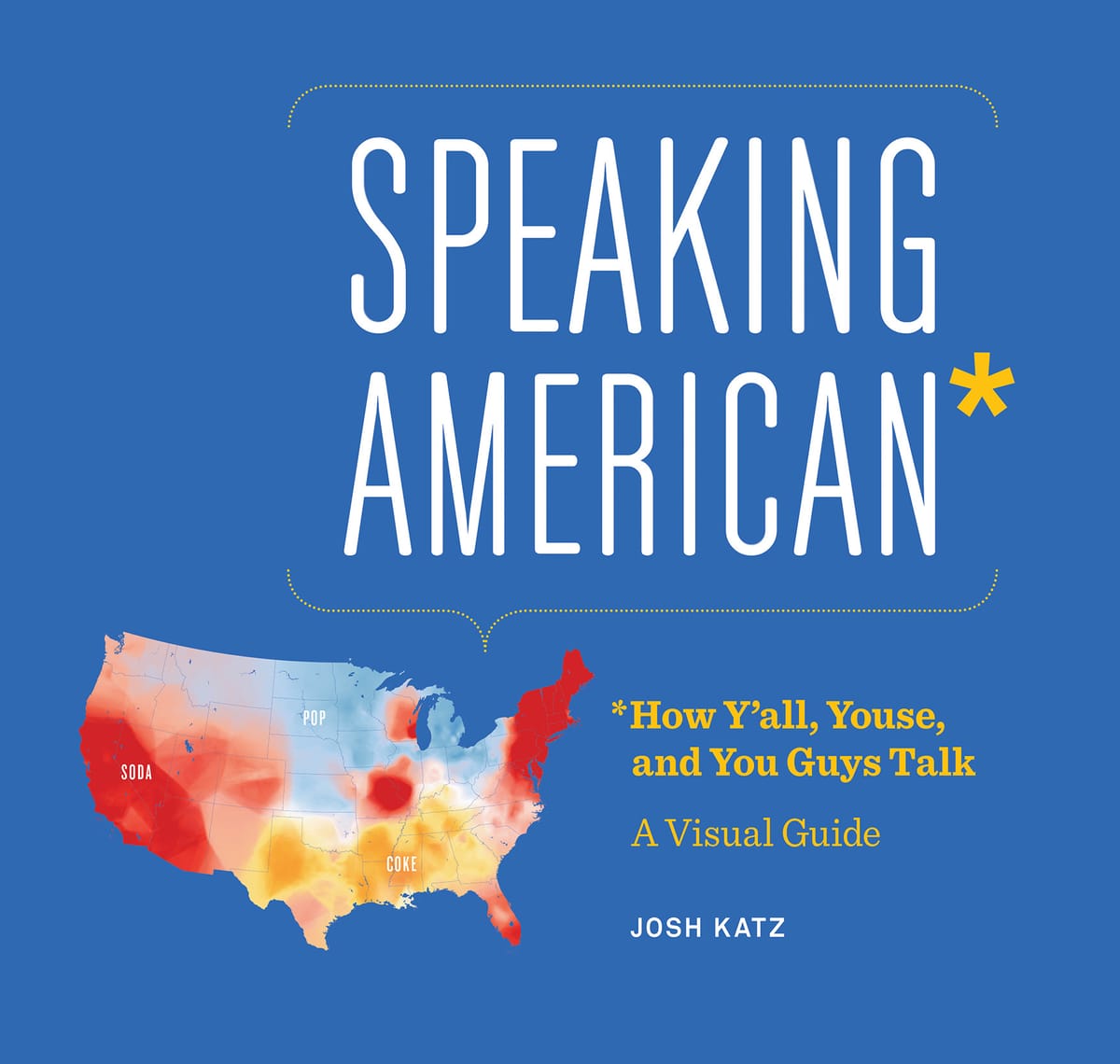Speaking American: How y'all, youse, and you guys talk
A beautiful and engaging coffee table book of 122 dialect maps showing how different regions of the U.S. say different things. A wonderful illustration of dialect diversity in the United States, this book is sure to spark great conversations. A must-have for any language lover.

Rating
⭐⭐⭐⭐⭐
Summary
A beautiful and engaging coffee table book of 122 dialect maps showing how different regions of the U.S. say different things. A wonderful illustration of dialect diversity in the United States, this book is sure to spark great conversations. A must-have for any language lover.
Prefer to watch or listen to this article instead? Here’s a video version.
Review
Ever notice that people from different areas of the United States have other ways of saying certain things? They might say pop where you say soda, or pronounce the word caramel as /ˈkɑɹ.məl/ with two syllables where you say /ˈkɛɹ.ə.mɛl/ with three syllables. Speaking American: How y’all, youse, and you guys talk: A visual guide is about exactly these kinds of differences. The book is a collection of 122 beautiful heat maps of dialect features across the United States, with a number of other fun features as well. It’s the perfect coffee table book, guaranteed to spur all sorts of discussion about dialect and pronunciation.
Here’s the map for words used for fizzy drinks:

And here's the map of how people pronounce caramel:

Some other fun but controversial words you’ll find include pecan, the 2nd person plural pronoun (you guys, y’all, you, yins, youse), kitty-corner vs. catty-korner, aunt, and whether you pronounce cot and caught with different vowels (25% of American English speakers pronounce them with different vowels, /kɔt/ vs. /kɑt/, while 75% pronounce them the same way).
There are two reasons in particular I love this book:
- First, it's a beautiful demonstration of the fact that there's no single "correct" way to speak American English. The United States has a wonderfully diverse linguistic landscape, and this book showcases it. Everybody speaks with an accent, no matter where they're from. Some dialects are given more social prestige than others, it's true; but linguistically speaking, all dialects are equal. Vocabulary and pronunciation rules vary from one region to another, but these are merely differences, not deficiencies.
- Second, this book is a wonderful illustration of the linguistic diversity of American English! There's even a heat map showing the percentage of the percentage of people who speak Spanish at home. It's hard not appreciate the remarkable diversity of language when you encounter all the different ways of saying things in this book, many of which you'll have never encountered before.
One of my favorite things to do with house guests is pull out this book and get their take on the various terms it covers. Do you say highway, freeway, expressway, or thruway? Do you call them fireflies or lightning bugs? I was astonished to find that even my younger sibling and I—only 3.5 years apart—differed on about a third of the items even though we were raised in the same household, simply because my family moved states just after they were born. Speaking American makes for the perfect coffee table book for this reason!
Another fun feature of this book is the “How to pretend you’re from…” sections sprinkled throughout. If you lace up your gym shoes to ride the L or drive on the expressway, for example, chances are overwhelmingly good that you’re from Chicago.
Katz even disaggregates the data at some points to give a more detailed perspective by word or region. Below is the map for the word crayons, but in the following map you can see that these hotspots are really more a matter of statistical tendency rather than absolute differences. In some cases Katz even shows how usage varies from one New York City borough to another!


As a linguist, I also really appreciate the diachronic (historical) perspective in several maps. For example, more and more Americans have started to pronounce cot and caught the same way over time, as this set of maps shows:

My only criticism of the book is that the pronunciations are written in pronunciation respellings like pih‑kahn instead of the International Phonetic Alphabet (IPA) like /pɪ.ˈkɑn/. Since Josh Katz is a statistician and trying to make the book maximally accessible to a general audience, this is an understandable tradeoff, though frustrating. The more that the general public is exposed to the IPA, the more familiar and recognizable it’ll become.
Overall, Speaking American is one of my favorite coffee table books—a must-have for any language lover.
If you’d like to buy a copy and support Linguistic Discovery for no extra cost in the process, you can do so here! Thank you for your support!

If you'd like to support Linguistic Discovery, purchasing through these links is a great way to do so! I greatly appreciate your support!
Check out my entire Amazon storefront here.




